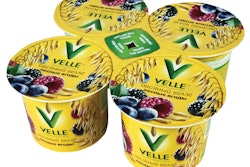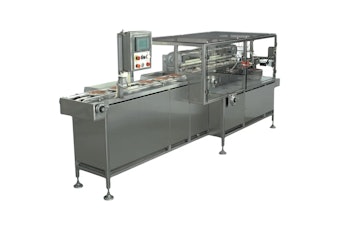1. Design “black holes.” Because artwork and design are so subjective, it’s easy to get caught in endless cycles of consumer research and design modifications. Also, artwork is often susceptible to painful, last-minute changes by the marketing department—even
after plates have been made, and labels are on press. This is a surefire recipe for missing launch dates.
2. Faulty assumptions based on past projects. Don’t assume that a pressure-sensitive label construction that’s worked in the past will work for a new product (or even for an identical product!). In one case study, a pressure-sensitive label that worked perfectly on one deodorant package was peeling off an almost identical new deodorant package. It turns out that the colorants and anti-stats in the new package were incompatible with the pressure-sensitive label construction. This is a cautionary tale to never skip your homework up front.
3. Too many projects going at once. The “mental make-ready” time of having to constantly switch mental gears between different projects can add delays, introduce mistakes, and reduce the overall quality of your label work.
4. Poor supplier coordination. At many CPG companies, the specifics of labeling tend to be considered at the back end, resulting in little or no coordination among the label supplier, design firm, container supplier, and labeling equipment manufacturer. Snags may occur due to unclear, inadvertent, or incorrect assumptions surrounding container size, shape, material, and machinability. Avoid these roadblocks by bringing together all the suppliers early in the process, setting clear expectations, and including supplier representatives on your team. Make sure everyone reviews and commits to a common timeline. The shared clarity and responsibility not only help avoid snags but can also minimize finger-pointing should issues come up.
5. Letting “perfection” be the enemy of the good. This applies to not only the artwork itself but also the implementation of the design in terms of printing. The “we’ll know it when we see it” school of thought often takes you right past deadlines. Getting the last 20% done can sometimes take as long as—or longer than—the first 80%.
6. Poor container tolerances. Inconsistent label placement accuracy, which at first glance may seem like a machinery problem, may in fact be due to variances in container shape. Always verify the tolerances on the containers you order. And be aware of the impact of the chosen container shape on the successful application of the label. Tapered containers, for example, are notoriously difficult to label with longer wraparound labels.
7. Skimping on an adhesive. Just because the label looks good leaving the production or filling line doesn’t mean its work is done. Will it stand up to the rigors, jostling, and temperature changes in the supply chain? Does it have good wet strength? Consumers’ perception of quality in packaging and products is affected more and more by how pristinely the package represents the brand at retail—and during use. On-the-go consumers expect packages to hold up to the abuses of being thrown into purses, backpacks, and back seats of cars. Even shrink sleeves can benefit from a spot of glue, especially if the container contours are not pronounced.
8. Brand protection added at end. Any brand protection program must be considered holistically early in package development. A hologram or a special printing effect might deter counterfeiting, but it might also arouse doubt in shoppers’ minds. Know what you want to achieve first, then take a multilayered approach to frustrate the bad guys while comforting your customers.
9. No central project or asset management. Your brand equities are critical to the success of your products. So they must be consistent across all of your products. Asset management software can be critical in making sure all your assets are up to date across all of your production means and processes. It can also help streamline production when you have to adjust package designs for the many different demands of foreign markets, such as materials information, product ingredients, and language requirements.
Liked this article? Download the entire playbook here.


























